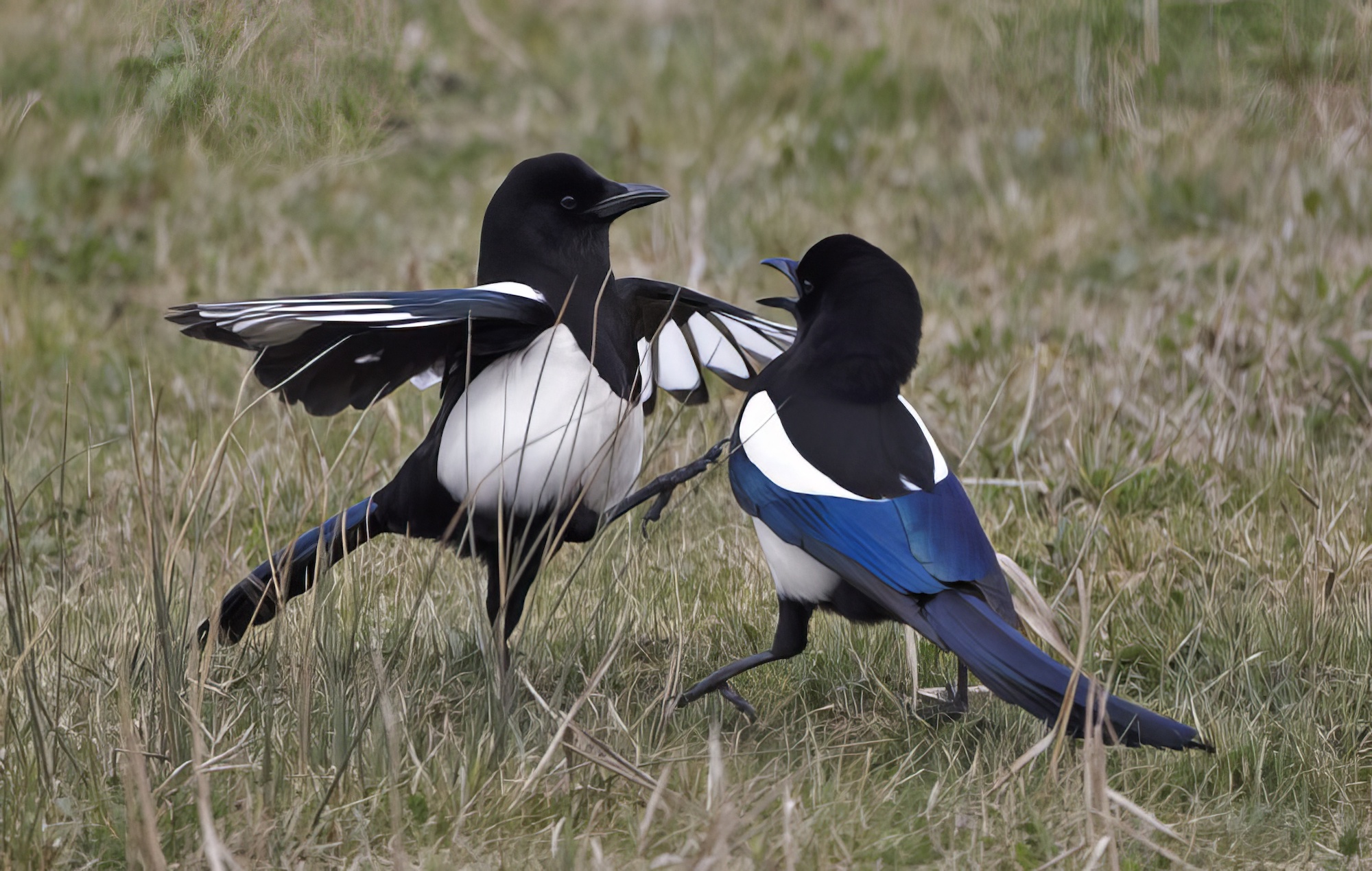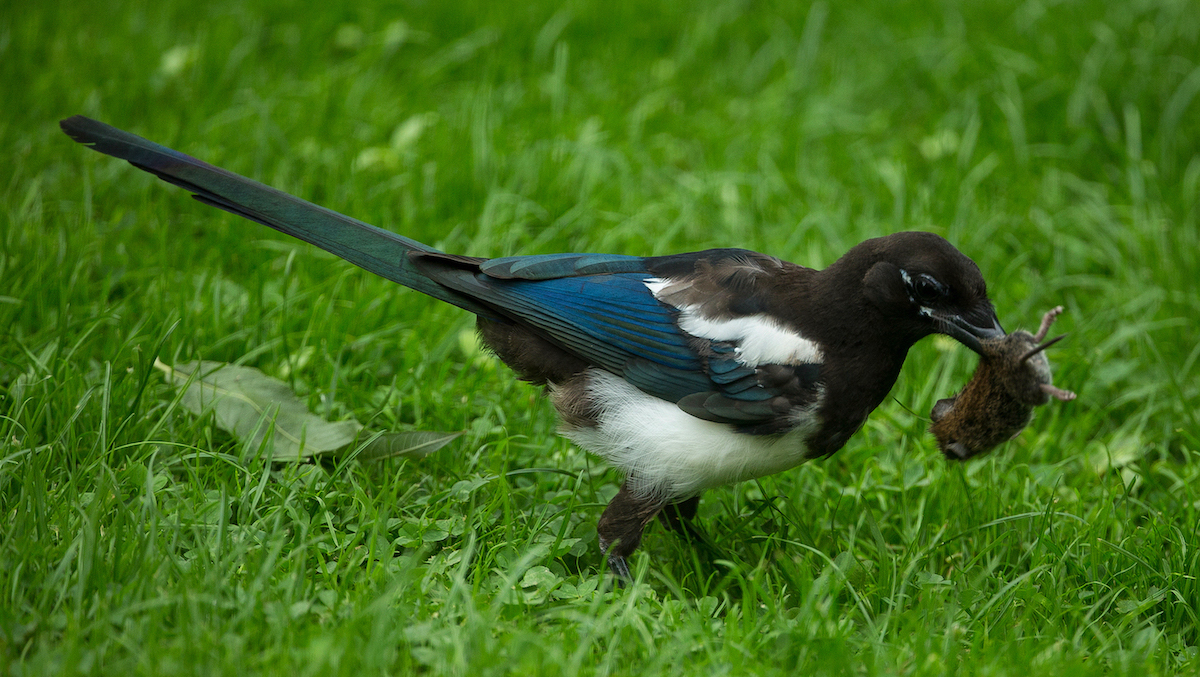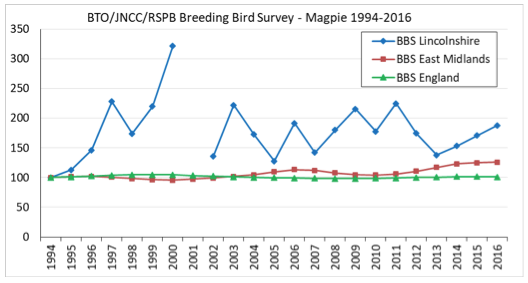Magpie Pica pica


Magpies are a common breeding resident in the county and were found in 77% of BBS survey squares in 2017 with an average of 2.7 birds per occupied square and were the 16th most widespread species in Lincolnshire. Double-figure counts are commonly reported, with totals tending to be largest over-winter, especially during January-March. Roosts and flocks of birds of up to 60 individuals have been reported with counts falling away after pre-breeding dispersal in March. The Atlas put the Lincolnshire Magpie population at 18,500-21,000 pairs in the late 1980s and despite the Lincolnshire BBS index suggesting an increase of 55% over the period 1994-2019, the APEP4 adjusted population is 20,000 pairs in 2016, illustrating the difficulties with such estimates. Although Magpie was found in every 10 km square in the county during the BTO Atlas 2007-2011, it remains scarcer in the fens, possibly limited by the availability of large hedgerow bushes and trees in which it nests. It was very difficult to confirm breeding in TF37 in the Wolds almost certainly because Magpies still suffer from persecution by shooting interests. Larsen traps can still be encountered in quiet areas of the countryside. Ironically Pheasant, Phasianus colchicus, carrion helps boost the Magpie population through what might otherwise be winter food shortages which would reduce their population levels.
There is no evidence of any regular autumn movements and indeed Magpies are a very sedentary species and loyal to their natal sites. One bird ringed as a first-year (juvenile) bird in the Grantham area in 1991 was found freshly dead in exactly the same area in 2008. There are just six recoveries in the county of birds ringed outside Lincolnshire in the BTO database, one ringed in Ruislip, Greater London, having moved 169km. All-England BBS results from the BTO up to 2016 showed no statistically significant change between 2015 and 2016 and the county BBS picture is one of a steady breeding population (chart).

